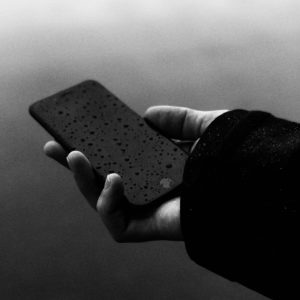
Knowing that a phone is ten times dirtier than a toilet seat, I moved.
Sounds extreme, but consider the context: I can’t stand anything on my screen. I compulsively wipe the surface of my iPad Pro twice a day. While I’m personally preoccupied with phone hygiene, the only other medical body with any level of concern appears to be the Indian dental community. There appears to be a budding phone hygiene cottage industry with the availability of UV Cell Phone Sanitizers.
I first became sensitive to device hygiene in the early days of Medicine X when I was keyboard to keyboard with digital health colleagues. I remember hightailing it to the Palo Alto Apple Store for iKlear wipe solution when I realized that my keyboard and screen were now other people’s business.
As medical staff there are standards for dress and other endpoints of appearance. And I always find it odd when physician colleagues shell out money for a decent car but not replace a shattered phone screen (or pony up the few bucks a month for insurance). As the conduits for physician-to-physician or patient communication, we need a device with a readable screen – and that includes preventing cumulative layers of grime.
My mother used to tell me that it’s what’s on the inside that counts. But the truth is that our technology is an extension of ourselves. Our phones are probably the most frequently used piece of interpersonal technology. How we maintain them needs some modicum of attention. Like brushing your teeth or making sure that you don’t have dirt under your nails, phone hygiene should be a thing for all of us.
Photo by Carlos Santiago on Unsplash